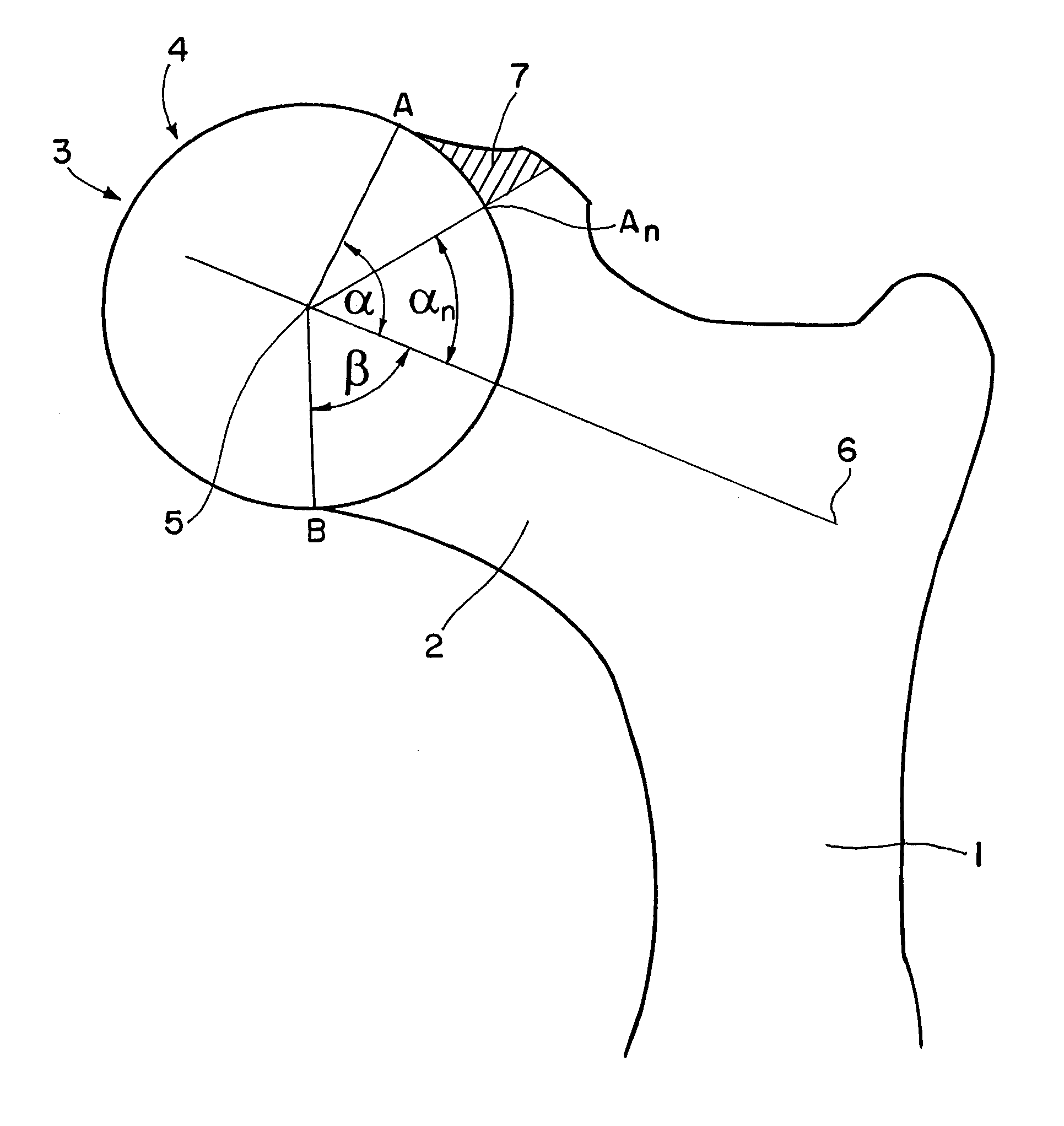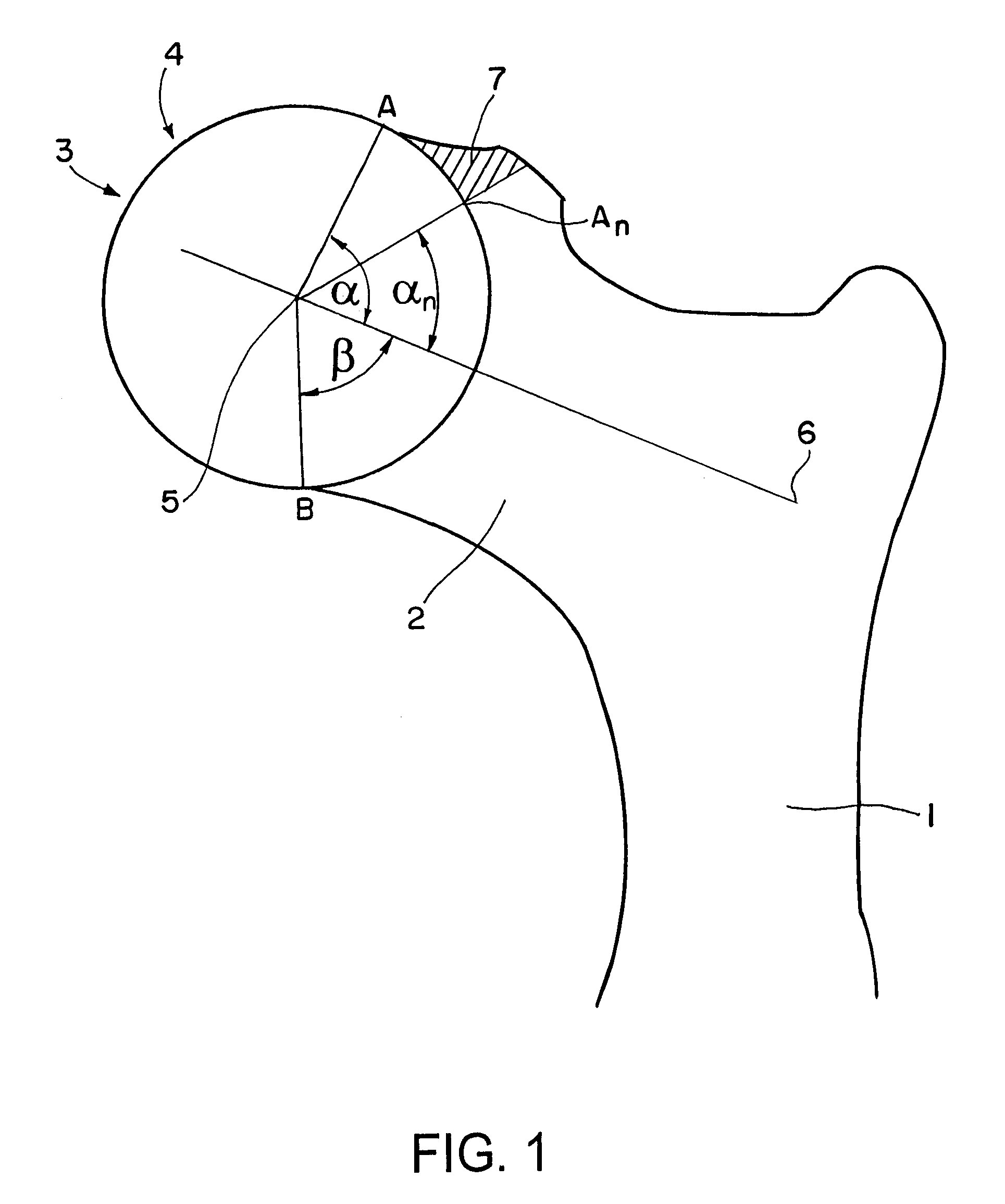Computer-assisted planning method for correcting changes in the shape of joint bones
a computer-aided planning and joint bone technology, applied in the field of computer-aided planning to correct changes in the shape of joint bones, can solve problems such as bone surface wear and bone interference in the joint region, and achieve the effect of easy output and volume of bon
- Summary
- Abstract
- Description
- Claims
- Application Information
AI Technical Summary
Benefits of technology
Problems solved by technology
Method used
Image
Examples
Embodiment Construction
[0032]FIG. 1 shows the neck region of a femoral bone 1, comprising a femoral neck 2 and a joint head 3. The joint head 3 has been inscribed with a sphere 4 that is shown as a circle in the sectional representation in FIG. 1. A center point 5 of the sphere 4 simultaneously forms the center point of the joint head 3 (head of the femur). Also shown in FIG. 1 are a femoral neck axis 6, and a protruding volume of bone shown as crosshatched region 7 (also known as a deviating volume), that can cause interference in the hip joint and arthritis.
[0033]To determine the deviating volume 7, particular angles are used as indicated in FIG. 1 as arcs in the circle having the center point 5. In a preoperative situation, an angle α indicates the angle between the neck axis 6 and a line 5-A, wherein A is the first point on the sphere at which the contour of the bone deviates from a spherical shape. An angle β is the angle between the neck axis 6 and a line 5-B on the lower (“healthy”) side of the fem...
PUM
 Login to View More
Login to View More Abstract
Description
Claims
Application Information
 Login to View More
Login to View More - R&D
- Intellectual Property
- Life Sciences
- Materials
- Tech Scout
- Unparalleled Data Quality
- Higher Quality Content
- 60% Fewer Hallucinations
Browse by: Latest US Patents, China's latest patents, Technical Efficacy Thesaurus, Application Domain, Technology Topic, Popular Technical Reports.
© 2025 PatSnap. All rights reserved.Legal|Privacy policy|Modern Slavery Act Transparency Statement|Sitemap|About US| Contact US: help@patsnap.com



